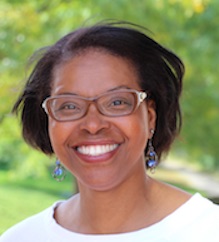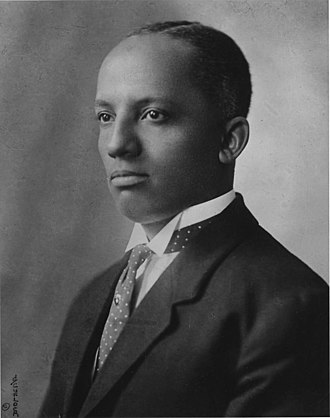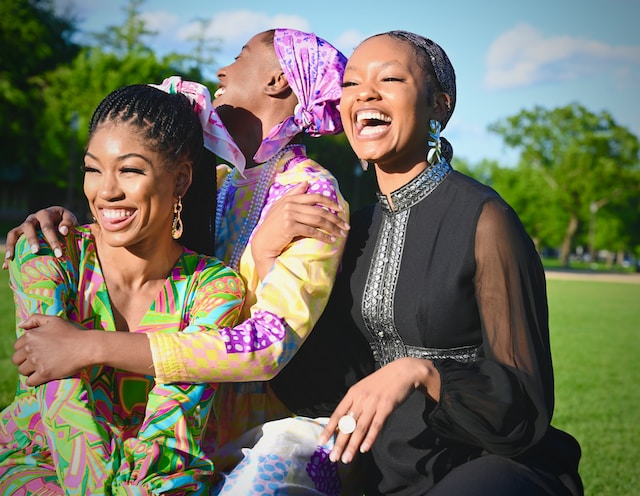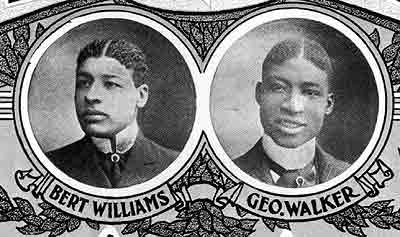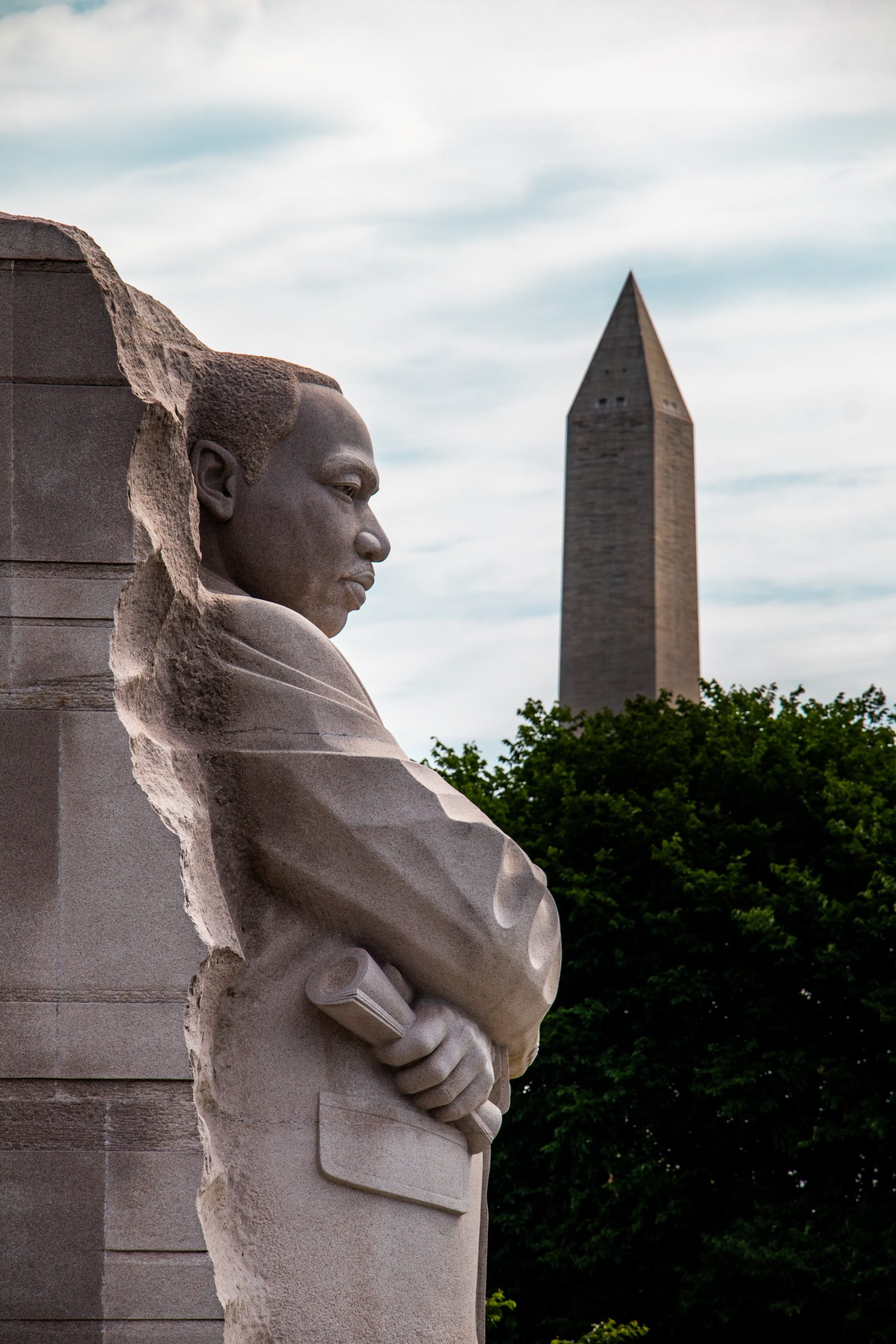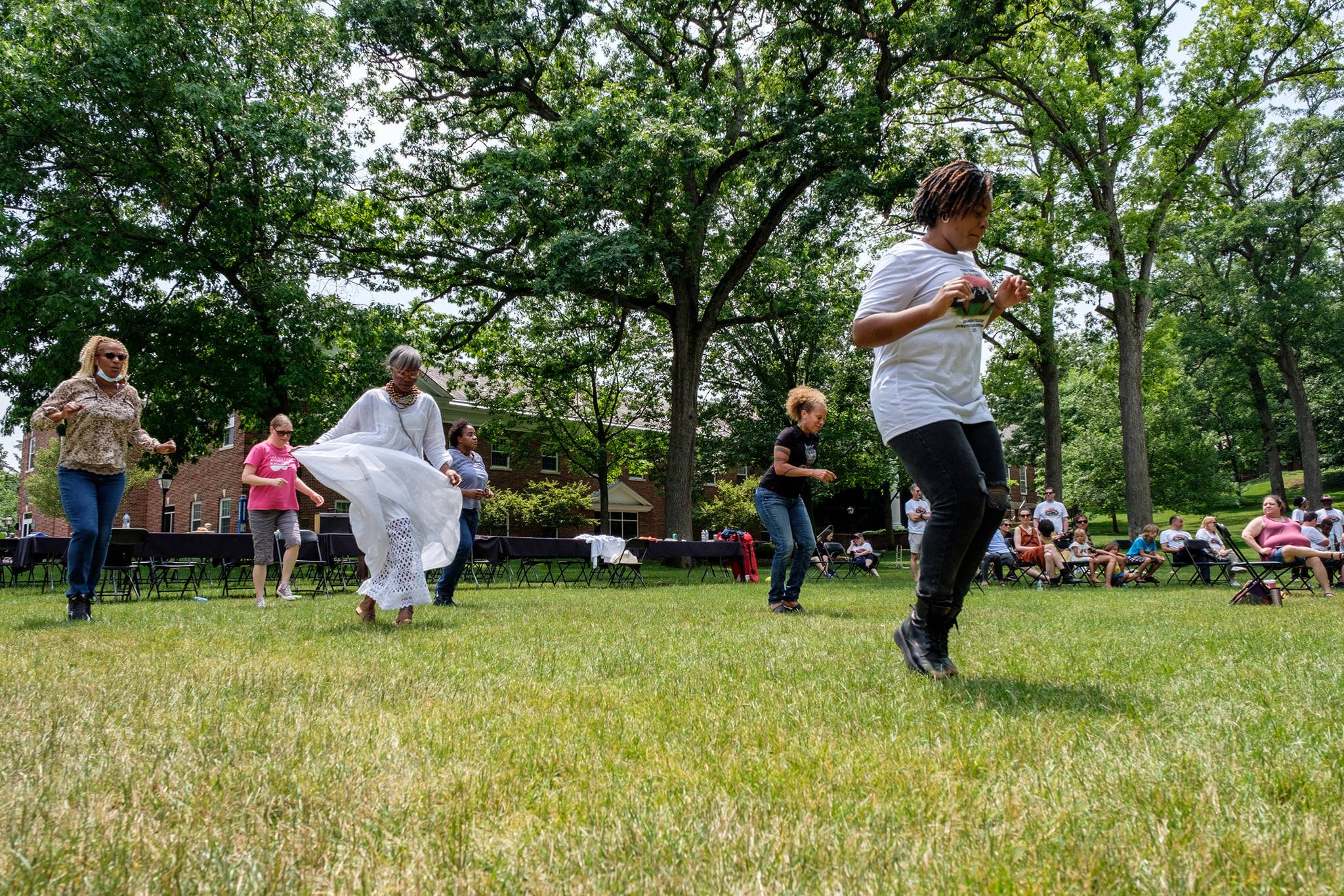
Juneteenth – It’s Time to Celebrate
by Drs. Lisa Brock and Regina Stevens-Truss
This month we’re taking it back to the inaugural year of the 19 stories. This 19 story was released to the Kalamazoo College community on June 19th, 2021.
Breaking News – AP: “The Senate passed a bill Tuesday [June 15, 2021] that would make Juneteenth, or June 19th, a federal holiday commemorating the end of slavery in the United States.”
Breaking News – NPR: “The Democratic-led House of Representatives on Wednesday [June 16, 2021] easily approved legislation to commemorate Juneteenth, the national remembrance of the end of chattel slavery in the United States, as a federal holiday.”
Breaking News – TWP: on June 17, 2021, President Biden signs into federal law that June 19 will forever be known as Juneteenth National Independence Day! “Great nations don’t ignore the most painful moments. They don’t ignore those moments in the past. They embrace them” stated President Biden in his remarks.
What a GLORIOUS week this has been! Before this year, however, if we had to guess, maybe 20% of the Kalamazoo College community knew what Juneteenth meant, and even less than that knew where the name came from. So, this Month in Black History story is dedicated (1) to K and the nation celebrating Juneteenth, (2) to everyone understanding why it is especially important that the nation will be celebrating it, and (3) to introduce you to what’s next for these monthly posts. Please read Lisa Brock’s keynote address given on Wednesday, June 16th during K’s inaugural Black Joy Week.
Juneteenth is a mashup of June and nineteen as a commemoration of the official day, June 19, 1865, when the last slaves in the USA were emancipated in Texas, and is considered the oldest known celebration commemorating the ending of slavery in the United States. Many African-Americans have for years celebrated Juneteenth (or Emancipation Day), something that began in Texas because on June 19, 1865 Union Major-General Gordon Granger read General Order No. 3 to the people of Galveston which, in all honesty, lacked the joy that Blacks must have felt. It stated:
“The people of Texas are informed that, in accordance with a proclamation from the Executive of the United States, all slaves are free. This involves an absolute equality of personal rights and rights of property between former masters and slaves, and the connection heretofore existing between them becomes that between employer and hired labor. The freedmen are advised to remain quietly at their present homes and work for wages. They are informed that they will not be allowed to collect at military posts and that they will not be supported in idleness either there or elsewhere.”
Juneteenth has been a quiet holiday among African-Americans, but has been gaining in popularity over the years in many communities, not just in the Black community.
It is important to note that the Emancipation Proclamation signed by Abraham Lincoln on January 1, 1863, freed the enslaved. However, several southern states that voted to secede from the Union were still battling the northern and pacific states in the Civil War (which ran from April 12, 1861 to May 9, 1865) in efforts to maintain slavery and form the “Confederate States of America.” Lincoln’s proclamation also expressly exempted parts of the Confederacy that had already come under Union (United States) control during the war. Thus, the system of enslavement was a negotiating tool used by President Lincoln to end the Civil War. It is difficult to imagine that the freedom promised in the Emancipation Proclamation depended upon a Union military victory. On January 31, 1865 the Thirteenth Amendment was passed, outlawing enslavement, but Section 1 of the Amendment states:
“Neither slavery nor involuntary servitude, except as a punishment for crime whereof the party shall have been duly convicted, shall exist within the United States, or any place subject to their jurisdiction.”
To understand how this clause of the 13th Amendment has contributed to racist penal policies and the Prison Industrial Complex of today, see Slavery By Another Name and Thirteenth, a Netflix documentary. Because many southern states refused to implement the new law, it was not until the end of the last battle of the Civil War in April of 1865 that the north claimed victory and the enslaved could begin to experience their new dispensation. Such was the situation in Texas.
So, this June marks the first time ever that Kalamazoo College is acknowledging Juneteenth and will, from here on, celebrate it during our annual Black Joy Week. This celebration has actually been in the cards for Kalamazoo College since June 19, 1861 when the College’s first Black student, Rufus Lewis Perry (a former enslaved person), graduated from the College’s Theological Seminary (check out the 1861 graduation program here).
A note from Lisa – “This is my last 19 Essay. Please welcome the new writer of the 19 Series, who will begin writing the monthly column in September, 2021. Dr. Pamela Brooks is an associate professor of African-American and African Studies at Oberlin College (please see Dr. Brooks on Juneteenth).”
A note from Regina – “It’s been an honor to work with Lisa on the first year of the 19 Series, and I look forward to working with Dr. Brooks next year. We did not imagine the impact and reach that these stories would have, and we have been delighted with the interest in them we’ve experienced. In July and August, I will post special short issues – so look for those. Also, starting in September 2021 the BAFSA will begin a video stories project called “We are not a Monolith: Stories from the Diaspora.” Have a great summer, get some rest, and rejuvenate.”
********
As we conclude our inaugural year of these stories, we would like to remind our community that these messages have been a collaboration of the ACSJL and the HHMI Inclusive Excellence team aimed at educating the K community on African-American history and culture as we continue to work towards being an anti-racist Institution. The number 19 marks multiple important dates in the lives of Blacks in the USA – 1619 being the year in which the first set of African slaves were brought to what would become the United States, and June 19, 1865, marking the day that Blacks celebrate the end of enslavement in the US.
We need to know our history, we need to teach our history, we need to remember our history.
Regina Stevens-Truss, Director of the HHMI Inclusive Excellence grant & Professor of Chemistry
Lisa Brock, retired, ACSJL Academic Director & Professor of History
